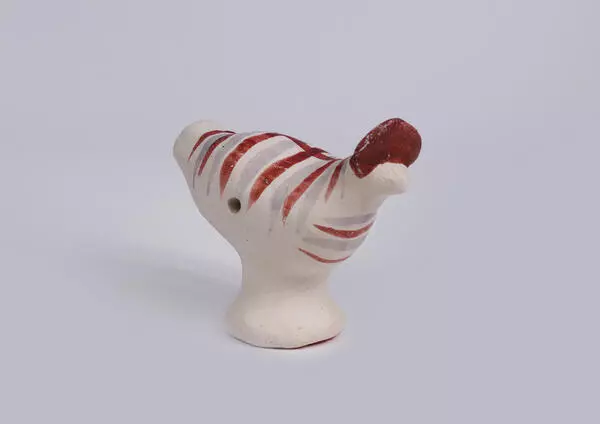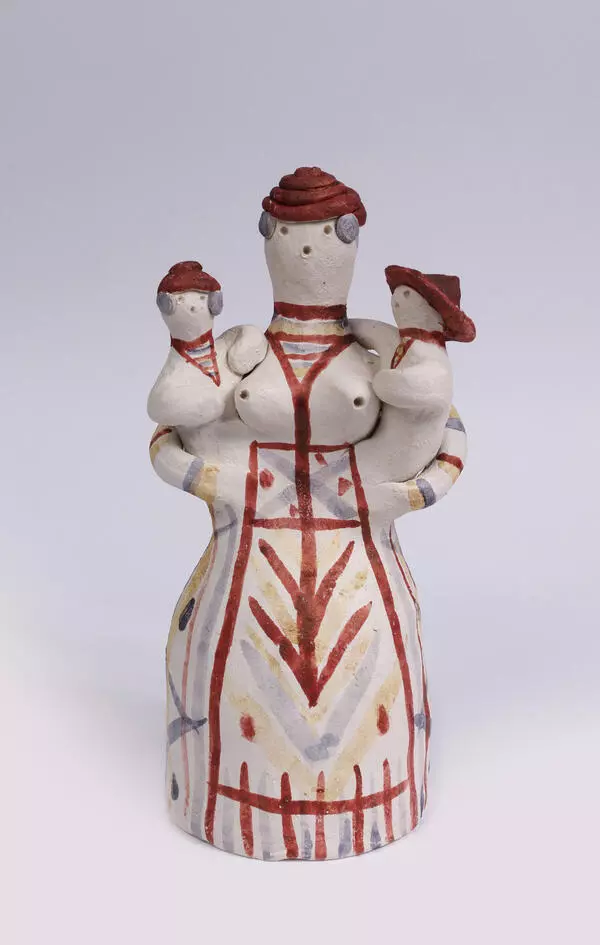A horse and a horseman is a clay toy-whistle made in the Chernysheno tradition. This name comes from the village of Chernysheno in the Oryol oblast. Its inhabitants were serfs, and, in addition to working for their master, they tried to earn money by various crafts.
The surroundings of the village were famous for a variety of clays: red, white, blue. One particularly viscous type stood out among them — men made tableware out of it, and women made toys. The development of pottery in the Oryol oblast came from the Cossacks who settled there to guard the borders in the 16th century. Their surnames were mostly Ukrainian, so the place where they took the clay was nicknamed by the people ‘Khokhlov Verkh’.
It was believed that the Chernysheno toy craft was in decline in the 1930s. However, in fact, the artisans in this village continued working even after the war. One of the 20th-century craftswomen, Elena Shelyaeva, told how they used to go to Khokhlov Verkh to get clay and how they then made toys. Lovers of Chernysheno toys often quote her special dialect,
The surroundings of the village were famous for a variety of clays: red, white, blue. One particularly viscous type stood out among them — men made tableware out of it, and women made toys. The development of pottery in the Oryol oblast came from the Cossacks who settled there to guard the borders in the 16th century. Their surnames were mostly Ukrainian, so the place where they took the clay was nicknamed by the people ‘Khokhlov Verkh’.
It was believed that the Chernysheno toy craft was in decline in the 1930s. However, in fact, the artisans in this village continued working even after the war. One of the 20th-century craftswomen, Elena Shelyaeva, told how they used to go to Khokhlov Verkh to get clay and how they then made toys. Lovers of Chernysheno toys often quote her special dialect,



